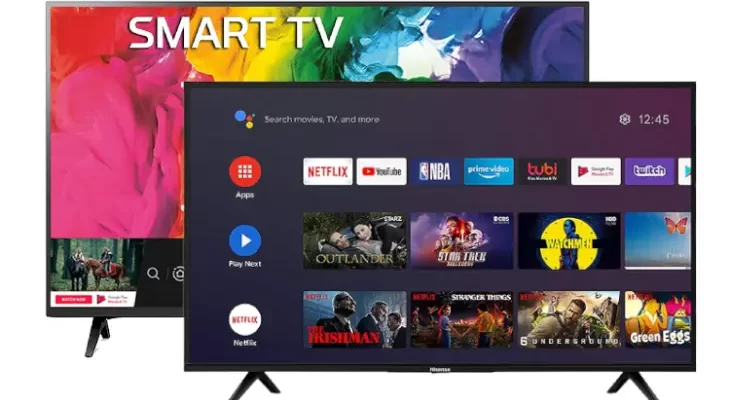Ever since the invention of television, it has been a major source of entertainment across the world. From the days of black & white television sets to the era of QLED ultra-HD smart TVs, we have come a long way. Today, in households around the world, you would either find a regular TV or a modern-day colour TV. Isn’t it? However, everyone nowadays loves to prefer smart TVs over regular TVs for they come with dozens of benefits. Here, we are going to learn about regular TVs, Smart TVs, and the major differences between them.
What is a Regular TV?
Regular TVs are the traditional sets that have been around for decades. They are simple with basic features such as channel selection, volume control, and power on/off. These TVs require an external source like a cable box or antenna to access programming. You need to get a DTH service to enjoy a variety of programs on regular TV.
The picture quality is typically good, however, it is not as advanced as the newer models. In short, it is a basic television that can display video and audio content but does not have internet connectivity or advanced features such as the ability to stream online content or run apps.
What is a Smart TV?
On the other hand, smart TVs are advanced models that offer a range of features beyond basic television programming. They have built-in Wi-Fi and an operating system that enables us to have access to the internet and various online applications. Smart TVs offer streaming services, gaming, social media, and internet browsing. They often come with pre-installed apps like Netflix, YouTube, and more, and can be controlled with a remote or voice commands. They have a high-resolution display, offering superior picture quality compared to regular TVs. In short, smart TVs offer you everything ranging from cable channels to the internet world.
Major Differences Between Regular TV and Smart TV
Internet connectivity: Smart TVs have built-in Wi-Fi or ethernet connectivity that allows users to connect to the internet, while regular TVs don’t have such features.
Operating system: Smart TVs are built with an operating system that allows users to access online content, stream movies, and TV shows, browse the web, and run apps. Regular TVs do not have an operating system.
Apps: Smart TVs come with pre-installed apps such as Netflix, Hulu, and Amazon Prime Video, and allow users to download additional apps from an app store. Regular TVs do not offer apps as they have just basic TV programming that you have accessed through DTH services. The Airtel DTH offers a plethora of channels. Here is the Airtel DTH channel list with the price.
Voice control: Many smart TVs come with voice control functionality allowing users to control the TV with their voice. This feature is not available on regular TVs.
Remote control: Smart TVs often come with a remote control that has additional buttons for controlling the TV’s smart features, such as an app button or voice control button. Regular TVs typically come with a standard remote control with basic functions.
Screen sharing: Smart TVs allow users to share their phone or computer screen on the TV, while regular TVs do not have this feature.




